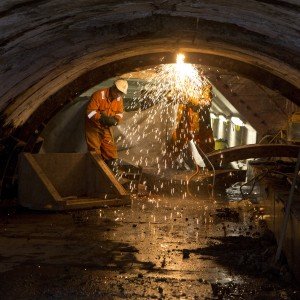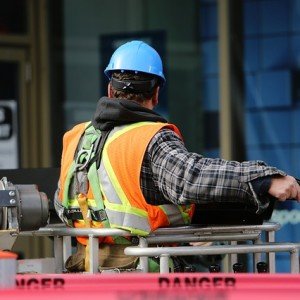the shp legal column
Construction and occupational health

Tim Hill, Partner at Eversheds Sutherland
In our regular legal column from Eversheds Sutherland, we hear from Tim Hill, who discusses the growing considerations of health and wellbeing in construction along with safety.
Since the first iteration of the Construction (Design and Management) Regulations in 1994, there has been a very clear focus covering all manner of construction work in terms of designing and delivering projects safely.
While the immediate safety of workers, both employees and various layers of contractors, has always been at the forefront of these regulations, there is an increasing focus on occupational health and wellbeing given the very significant long term impacts of musculoskeletal injuries, occupational illness and broader mental health and wellbeing across the construction industry.
Health, safety and wellbeing in construction

Credit: John Zammit
As well as keeping people safe, it is now a clear expectation for those involved in construction projects that they should be considering not only securing health and wellbeing on a par with keeping people safe, but in some cases looking to actually improve health and wellbeing across the longevity of a project.
As the title of the CDM Regulations makes clear, they are concerned not simply with the design and building of new structures, but also the “management” and this directly links to how structures will be operated, maintained and, if necessary, upgraded throughout their lifespan.
Significant infrastructure projects, for example HS2, have very publicly set out that it is their intention through their “Safe at Heart” or equivalent programmes actually to improve worker health and wellbeing over the time they spend on the project.
It is also increasingly important to consider how structures will be accessed for maintenance and repairs to minimise the impact on a worker’s health. For example, in the past it may have been acceptable to have small crawl spaces, relatively inaccessible items only accessed through working at height, or control systems which can only be accessed having physically got into a confined space.
Principles of prevention
While it is arguable that structures should not have been designed in this way for some time, the increasing focus on health and wellbeing in construction means that this is no longer acceptable.
The principles of prevention apply just as much to issues around occupational health and wellbeing as they do to mainstream safety and therefore all involved in construction projects should be thinking about the implications of how the structure is to be built and maintained and how those involved with the structure will be protected in terms of ongoing occupational aspects.
There is also a direct link between giving additional thought to these aspects and an overall increase in performance standards not only in terms of the construction phase, but also in terms of the ongoing use of a particular building or structure.
When further specific thought is given at the early design stages to making the structure as efficient and user friendly as possible, there is increasing evidence that the building itself becomes more sustainable and attractive for those working within it or involved in its maintenance and operation.
Duty to consult workers
 Another key aspect to consider is the ongoing duty to consult with workers in any workplace, so that they can feed in what they need and expect in terms of day to day operations.
Another key aspect to consider is the ongoing duty to consult with workers in any workplace, so that they can feed in what they need and expect in terms of day to day operations.
Applying this concept not only to the operation of a building but looking at it through the lens of the construction phase and with a view to ongoing management, getting a much greater level of consultation and input from workers will inevitably mean that the design of the structure should be more effective and in considering these ergonomic and efficiency aspects, and there should then be a positive benefit not only for health and wellbeing but also in terms of the success of the construction project itself.
In our experience, the more parties to a construction project fully embrace the concept of system fit and whole life safe decisions when designing and undertaking a construction project, the greater the buy in from the entire workforce and the more successful the project will be.
This is increasingly expected in many of the large scale infrastructure projects which we’ve advised on in the last few years and that approach then cascades down to become not only the norm but what is “reasonably practicable” in terms of delivery on all construction projects.
Ensuring that all of the key duty holders embrace the fundamental principles of communication, co ordination and co operation in regards to occupational health, will ensure the success of that project and the long term health and wellbeing of everyone involved in it.
Tim Hill is a Partner in Eversheds Sutherland’s Environment, Health and Safety Team. He can be contacted on [email protected].
Construction and occupational health
In our regular legal column from Eversheds Sutherland, we hear from Tim Hill, who discusses the growing considerations of health and wellbeing in construction along with safety.
Safety & Health Practitioner
SHP - Health and Safety News, Legislation, PPE, CPD and Resources Related Topics
British Safety Council Wellbeing Conference: Empowering Employees for Success
New flexible working legislation – what does it mean?
Drug and alcohol testing in a UK airport environment



 Another key aspect to consider is the ongoing duty to consult with workers in any workplace, so that they can feed in what they need and expect in terms of day to day operations.
Another key aspect to consider is the ongoing duty to consult with workers in any workplace, so that they can feed in what they need and expect in terms of day to day operations.
I’m curious about the integration of new technologies. How are construction companies leveraging innovations like wearable devices or real-time monitoring systems to ensure the well-being of workers and compliance with health standards? Are there any specific success stories or challenges associated with adopting these technologies in such a physically demanding and diverse work environment?